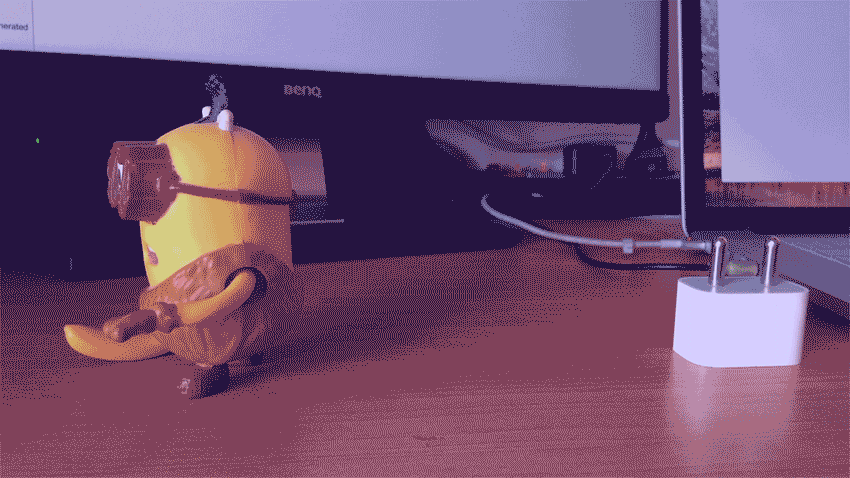“Patience is bitter, but it’s fruit is sweet.”
Aristotle
This quote is apt in animation. Animators know the real meaning of the word patience. When they spend uncountable days and sleepless nights to create a few seconds of an animated clip, when they make a countless number of drawings on paper/computer to make Naruto and Luffy fight Villains. But after all this hard work, what comes out from it is the Magic, and we all have witnessed it while watching all those incredible movies and series over the years.

Animation is a complicated job. It was more complicated and lengthy when there were no computers. In this article, I am going to talk about the animation before the computer and after the computer and how it changed.
Types of Animation
We learned what animation is in my last article. If you haven’t read it yet, I would recommend you to do so first. Here is the link to the article.
There are three main types of animation:
1. Traditional Animation/Cell Animation

This is the oldest type of animation. All those cartoons we used to watch like Looney Tunes, Bug Bunny, Mickey Mouse, Duck Tales, etc. All were made using this technique.
In this type of animation, the animator used to draw everything on paper. Yes!! Literally, everything was hand-drawn. They used to make millions of drawings and each drawing was slightly different than the other. So when you view them in sequence, it creates an illusion of animation.
The paper used for the drawing is called “Cell.” That is why this technique is also called Cell Animation. After the drawing is done, it used to be photographed using a rostrum camera. A rostrum camera is a specially designed camera used in television production and film-making to animate a still picture or object.
I found a very cool video on YouTube explaining “How Walt Disney Cartoons Are Made”. It’s really worth watching.
Traditional animation was more famous in the 20th century. Later, when computer animation came into the picture, traditional animation became obsolete. However, some studios still prefer to work in this style.
Best examples of traditional animation are movies like Spirited Away (2001), The Jungle Book (1967), My Neighbor Totoro (1988), The Lion King (1994), The Simpsons Movie (2007), etc.
2. Stop-motion Animation
In traditional animation, each and every frame is drawn to animate it. In stop-motion, we move the objects from one place to another. This change in position makes an illusion of movement. For example, see how the phone charger picks up a fight with a minion.

Haha.. I know it is a lame effort. What I did here, I made stop-motion animation by clicking photos of the charger and minion. In each photo, I changed their position slightly and then put all the images in an animation software program to make a video clip.
People often relate stop-motion animation with time lapse. They might look the same in some cases but both are different. In time-lapse, the frequency at which film frames are captured is much lower than what is used to view the sequence. When played at normal speed, time appears to be moving faster.
Before the modern era of animation began, stop-motion was a savior for film directors. It was used in many movies to show magic happening or the scenes which were impossible back then to shoot or create. For example, watch this clip from very famous movie ‘King Kong (1933) ending scene‘ on Youtube. Fan of Shaun the sheep and Lego movies? They were made with stop-motion animation too.
3. Computer Animation

Computer animation is a combination of both traditional and stop-motion. Like stop-motion, animators here use models but they are developed using animation software programs. Just like traditional animation which is done using frames, in computer animation too, animators use a frame-by-frame technique.
In short, in this type everything is done using computers. Computers have opened up unimaginable possibilities for animators. Right from drawing characters and scenes to animating them, everything takes place in computers. There are specially designed software for each process to make animators’ lives easy. Software like After Effects, Maya, 3ds Max, Toon Boom Studio, Adobe Flash are widely used for animation.
It is more preferable type these days as it saves time and cuts the cost of production. Computer animation can be categorised into many types. For example:
- 2D Vector-based animation
- 3D computer animation
- Motion graphic animation
- Typography animation
Examples of computer animation movies are all of the movies that are produced these days.
Frequently Asked Questions
How long does it take to create a traditional animation sequence?
It depends on the complexity of design and the level of detail needed. It also depends on the skillset of Animator. As a rough rule of thumb, an animator might complete around 4 seconds of frame-by-frame animation per day. Source: superdoodle
Is computer animation suitable for all types of animation projects?
While computer animation offers many advantages, it may not be suitable for all types of animation projects. Certain projects may require the unique charm and authenticity of traditional or stop-motion animation techniques.
What are some emerging trends in the animation industry?
Virtual reality (VR) and augmented reality (AR) are transforming the way we experience animation, offering immersive storytelling experiences. Additionally, the demand for animated content for streaming platforms, mobile apps, and social media continues to grow, creating new opportunities for animators to showcase their talent and reach diverse audiences.
